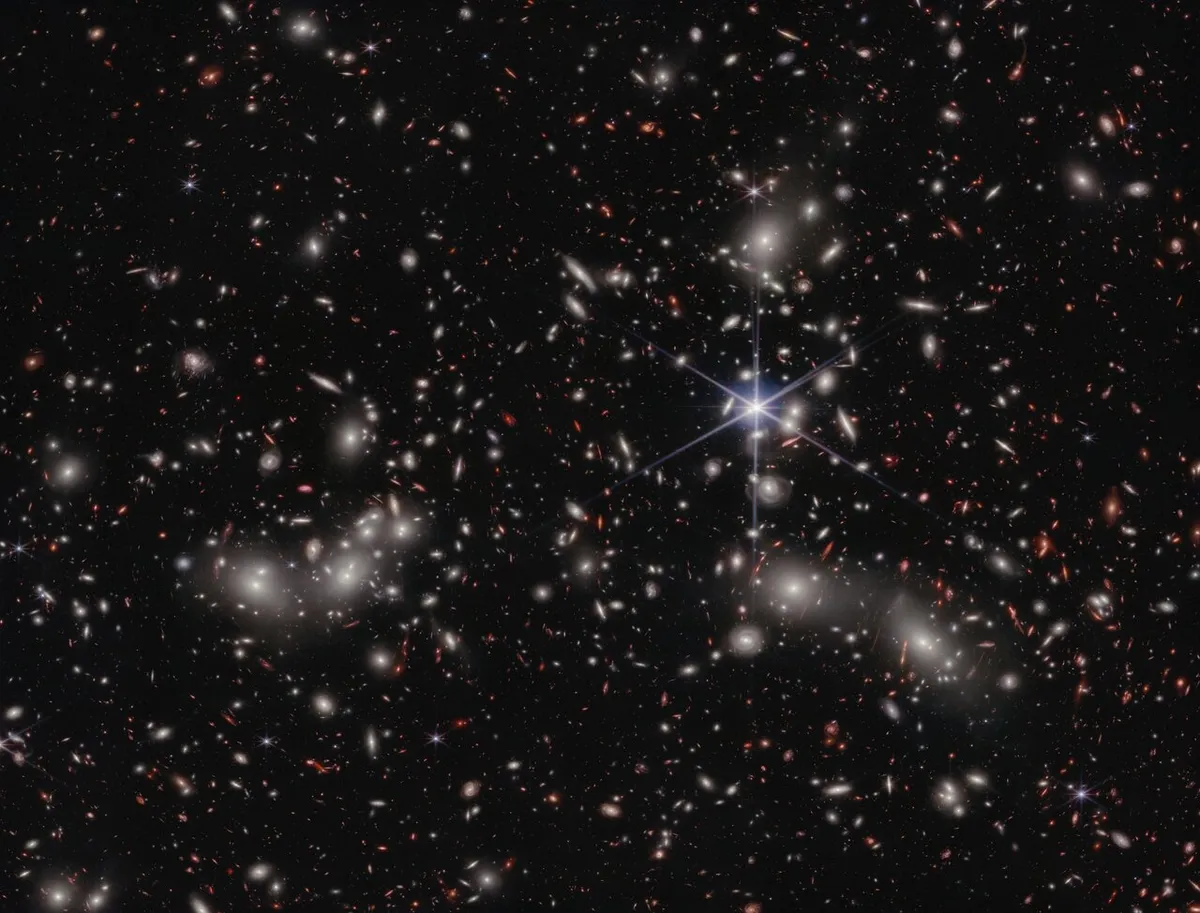The latest deep-field image captured by the James Webb Space Telescope has been released.
It shows a region in deep space known as Pandora's Cluster, or Abell 2744.
See more of James Webb Space Telescope's latest images

The new Webb image reveals the intricate structures of three galaxy clusters - together forming a so-called 'megacluster' - in detail never seen before by astronomers.
The image of Pandora's Cluster is actually a panoramic composed of four individual JWST images sewn together.
It reveals 50,000 sources of near-infrared light, as observed by the Webb Telescope's Near-Infrared Camera (NIRCam) instrument.
Webb scientists captured the image as part of the Ultradeep NIRSpec and NIRCam ObserVations before the Epoch of Reionization (UNCOVER) programme.
One particularly noteworthy feature of the image is that it displays a phenomenon that's known as gravitational lensing.
The combined mass and gravity of the galaxy clusters warps and distorts the light of more distant galaxies, allowing them to be more easily observed.
In this way, the galaxy megacluster is acting like a cosmic magnifying glass.
The effect of this can be seen as arc-like streaks in the lower right of the image.
This is light from distant galaxies passing through spacetime that has been warped by the combined mass of the galaxy clusters.
The image was created by capturing exposures of 4–6 hours for a total of about 30 hours.
Now, the UNCOVER team will follow up with observations using Webb's Near-Infrared Spectrograph (NIRSpec).
The aim is to gather more information about the lensed galaxies' compositions, in order to gain new insight into how early galaxies formed and evolved over time.
Read more about this story at esawebb.org/news/weic2305
